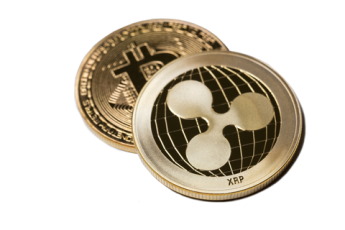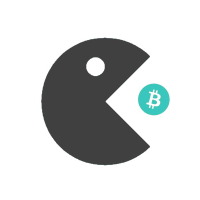Ripple

The 1 Minute Summary
- Ripple is a network developed to facilitate cross border payments
- There is a fixed supply of XRP, the Ripple token (100 billion)
- There is no mining in the Ripple network.
- Ripple can settle a payment in 4 seconds
- The network can handle 1,500 transactions every second.
- Ripple uses a blockchain, but a simplified version.
- The network works within the existing financial system, Ripple actively target banks to work with them.
- The SEC have accused Ripple of launching an unregistered security
- Ripple deny this. Their argument is that owners of XRP do not own a share of the company.
- The main competition is Stellar (with the Lumens token). This was originally a hard fork (split) of the Ripple blockchain.
The Deeper Dive
What is XRP? Who are Ripple?
You may have heard of a cryptocurrency called XRP that was launched by Ripple in 2012. But what is XRP exactly? And how does it differ from the more famous cryptocurrency: Bitcoin? For a deeper dive on that, head to our ‘Bitcoin Explained‘ page.
Well, Ripple is a network with a cryptocurrency, ie electronic money that is only represented by 1s and 0s on the Ripple network, but it was invented as a means of transferring money either between individuals or banks rather than as a replacement for dollars or euros or as a store of value. Instead of using it to pay for stuff, it was invented as a payment settling, currency exchange and remittance system.
Why use the SWIFT bank transfer system when you can make a turbo charged transfer over Ripple for less? You can send Euros, Dollars and even Gold quickly over the network for a low cost and the transaction is transparent (open source).
The idea is that you convert money into XRP for international transactions, and you pay less in fees than you would do at a bank. You then convert it back at the other end.
Because the network is so efficient, you cut down the time for an international transfer from three to five days to just a few seconds. And it is all done on the XRP ledger (basically a record of all transactions across the network), a decentralised peer-to-peer database on which the XRP tokens operate. When we say decentralised, just remember that Ripple has created a system to help the existing financial system transfer money. It is decentralised across a network of financial institutions in the main.
Fixed Supply
One of the big differences between XRP and Bitcoin is that a fixed number of XRP coins have been minted. New Bitcoin are being created all of the time by miners (although there is a cap on the total Bitcoin supply of 21 million).
In total, Ripple has created around 100 billion XRP coins, although not all of these are in circulation.
Ripple owns approximately 60 billion XRP and hold 55 billion of them transparently in an escrow account. They’re able to release up to billion of these a month to counter any volatility, although they rarely do. Any XRP that are not used again go back into escrow (transparently).
While Bitcoin transactions can take minutes and even longer due to the size of the blockchain, XRP transactions take seconds. This cryptocurrency is all about speed, you could say it is “ripped”.
A Blockchain but Not as You Know it
Bitcoin and other coins like Litecoin work on blockchain technology (read our ‘What is Litecoin? page for more info).
Ripple also uses a blockchain, but it is not weighed down by mining and there are no complicated puzzles to solve. It is known as a “distributed consensus ledger” on a network of validating servers using crypto tokens called XRP (sometimes called Ripples).
Speed
Ripple is all about speed. They claim that XRP is capable of settling a payment within 4 seconds and handling 1,500 transactions every second.
In the main, existing systems use US dollars as the common currency for conversion which is why you get hit with fees and why the transfer takes so long. The whole laborious process incurs currency exchange fees and takes time – which is why bank transfers between accounts in different countries often take up to three days to process.
On the Ripple network, your money is converted into Ripples (XRP) rather than dollars, bypassing the exchange. Fees are eliminated and the whole process is speeded up
Many international banks are trialing or implementing applications that use the Ripple payment system. The fifth largest bank in the world, Mitsubishi UFJ Financial Group, is an official Ripple partner. Other banks trialing or using the technology include Santander, Barclays, Bank of America and Credit Agricole.
They Fought the Law and the ….
I hear that they are having problems with the SEC (US Securities and Exchange Commission)?
In December 2020, Ripple Labs and two of its executives (CEO Brad Garlinghouse, and co-founder Chris Larsen) were sued by the U.S. Securities and Exchange Commission (SEC) for selling XRP tokens. The SEC has classified XRP as unregistered securities (a tradable financial asset).
In the lawsuit, the SEC is claiming that XRP is a security rather than a commodity, as it was generated and distributed from a central source and was not being adopted by financial institutions for its advertised use cases. The SEC noted that Ripple executives sold 14.6 billion tokens of XRP for more than $1.38 billion to fund the company’s operations and enrich themselves.
Following the announcement, many crypto exchanges such as Coinbase have suspended trading of XRP on their networks.
This follows a class action that was filed against Ripple in May 2018. The charge was that Ripple developed a scheme to raise hundreds of millions of dollars through unregistered sales of XRP tokens. According to the class action, “the company created billions of coins ‘out of thin air’ and then profited by selling them to the public in ‘what is essentially a never-ending initial coin offering’.”
Diving Even Deeper
How does Ripple work? Well, it is often compared to the Hawala system of transferring money used in ancient South-East Asia (and to this day) where a minimum of four people are used to send money from one country or city to another. (Sender A, Dealer A who are in one country, let’s say, and Recipient B, Dealer B who are in another country).
Dealer A and Dealer B trust each other so they advertise in their respective countries that they offer transfers from country A to country B.
The transfer is easy. Sender A gives the money to Dealer A in his or her country (they have built up a trust) and the Dealer passes on a code. Dealer A then tells Dealer B in the recipient’s country how much money was transferred and the code. Sender lets the receiver know the code and he or she can then pick up the money from the local agent (minus a fee). The 2 dealers settle up separately.
That is essentially how Ripple works. Instead of dealers, there are Ripple Gateways on the network (typically financial institutions). The transactions can be carried out over a chain if any 2 gateways don’t trust each other. They might both trust a 3rd gateway which can act as the link in the chain.
Frequently Asked Questions
Is Ripple more Similar to Bitcoin or Ethereum?
They are all different “cryptos”. In one way, Ripple is similar to Bitcoin in that there will only ever be a finite supply of Ripple. That’s a key point to understand if you are thinking about investing in these cryptocurrencies.
Is Ripple a Security?
That’s the ten million dollar question. Because so much XRP is owned by Ripple and isn’t used as a currency, and the main stake holders have been selling XRP, it has been accused of being a security.
Garlinghouse believes it should not be, as it serves a utilitarian purpose, and owning XRP does not mean owning a part of the company Ripple.
Hmmm, we shall see how this one pans out in court I guess.
What is Ripple’s Main Competitor?
That would be the Stellar Network. Jed McCaleb, who was heavily involved in the creation and launch of Ripple, is the main driver behind Stellar. McCaleb left Ripple with Joyce Kim to launch the newer crypto.
(McCaleb sold off more than one billion XRP between 2014 and 2019 and has another XRP 4.7 billion to sell, equating to around 5% of the total supply.)
Both Stellar and Ripple use blockchain technology to enable fast, efficient, cost-effective cross-border payments.
But whereas Ripple has focused on banks and financial institutions for its network, Stellar has been targeting individuals.
Stellar originally launched as a hard fork of the Ripple blockchain. Therefore, many of the technical specifications are similar. The Stellar token is called Lumens (XLM), more info on our Stellar page!
